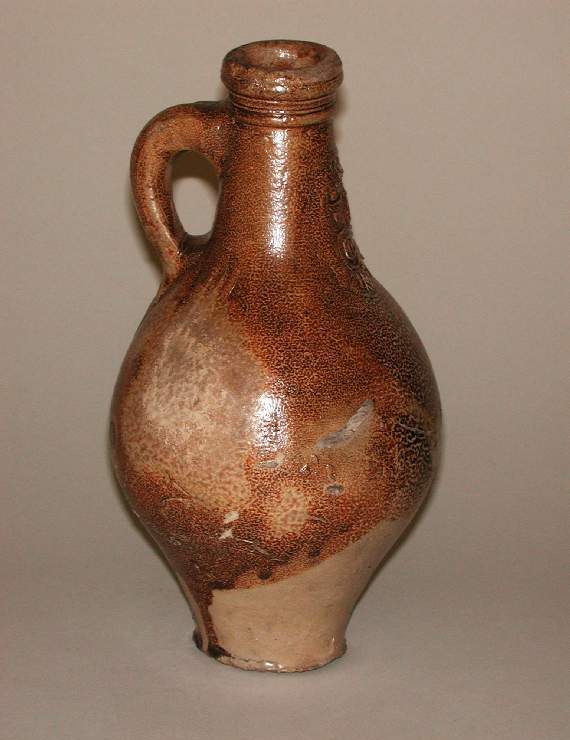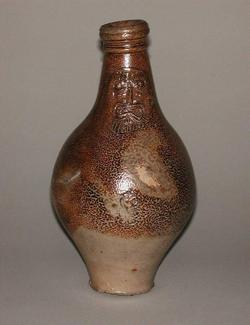Current Location: In storage
Maker(s)
Production:
Unidentified Frechen pottery
Entities
Categories
Description
Buff-grey stoneware with applied moulded relief and impressed decoration, partially coated with iron-brown wash, and salt-glazed. The bottle has an elongated bulbous body, a tapering cylindrical neck with a cordon below the mouth, and a small loop handle. A bearded face mask in relief is applied to the front of the neck, and lower down is an impressed plant motif.
Notes
History note: An owner, possibly in Essex; an unidentified dealer; Mr Morley, Cambridge, from whom bought in 1894 by Dr J.W.L. Glaisher, FRS, Trinity College, Cambridge
Legal notes
Dr J.W.L. Glaisher Bequest
Acquisition and important dates
Method of acquisition: Bequeathed
(1928-12-07)
by
Glaisher, J. W. L., Dr
Dating
17th Century
Circa
1600
-
1699
Note
The German term for salt-glazed stoneware jugs with bearded masks below the rim is Bart¬mann or Bartmannkrug (bearded man jug). They were produced in vast quantities at Frechen during the second half of the six¬teenth and seven¬teenth centuries, in a range of different sizes for domestic or commer¬cial purposes. They were exported to England by Dutch merchants through ports in the Netherlands, and were widely distributed and used until the late 17th century when the manufacture of salt-glazed stoneware and glass bottles was developed here. The German stoneware jugs became known as `Bellar¬mines' reputedly after Cardinal Roberto Bellarmino (1542-1621) whose reforming zeal made him unpopular in Protestant states. The term was first mentioned in William Cartwright’s comedy 'The Ordinary', (1634), and by the 19th century this had become a common collectors' term for these bottles.
References and bibliographic entries
Identification numbers
Accession number: C.2031-1928
Primary reference Number: 76583
Old object number: 663
Stable URI
Audit data
Created: Saturday 6 August 2011
Updated: Tuesday 26 March 2024
Last processed: Tuesday 15 July 2025
Associated departments & institutions
Owner or interested party:
The Fitzwilliam Museum
Associated department:
Applied Arts






